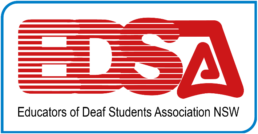McLeod, S., & Crowe, K. (2018). Children’s consonant acquisition in 27 languages: A cross-linguistic review. American Journal of Speech-Language Pathology, 27(4), 1546–1571. doi:10.1044/2018_AJSLP-17-0100
As teachers of the deaf, a sound understanding the typical development of consonants in children’s speech is a requirement. Normative data on the acquisition of consonants in English, including Australian English, is readily available. We know that for English most children will develop consonants such as /p/ and /m/ earliest and /θ/ latest. We know that by the time children are 5-years-old the majority of children will be able to use the majority of English consonants correctly and will, on average, have percentage consonant correct scores of over 90%.
However, what happens when the child you work with speaks a language other than English? What do you know about typical patterns of consonant acquisition in languages other than English?
McLeod and Crowe (2018) recently published a review of studies examining consonant acquisition in the American Journal of Speech-Language Pathology. Included in the review were 60 papers describing 64 studies of consonant acquisition in 27 different languages: Afrikaans, Arabic, Cantonese, Danish, Dutch, English, French, German, Greek, Haitian Creole, Hebrew, Hungarian, Icelandic, Italian, Jamaican Creole, Japanese, Korean, Malay, Maltese, Mandarin, Portuguese, Setswana, Slovenian, Spanish, Swahili, Turkish, and Xhosa. Dubbed “That one time a journal article on speech sounds broke the SLP internet” (The Informed SLP), this systematic review has caused intense discussion among the speech-language pathology and educator community as representing ‘new’ norms for age of consonant acquisition in typically developing children.
In this paper there are four main sections:
- Data from the 64 studies were analyzed and presented in the paper in terms of the consonants that children acquired to the 75-85% criteria and to the 90-100% criteria and the mean age of standard deviation for the acquisition of each consonant is given.
- The accuracy of consonant and vowel production is also examined across languages with mean values for percentage consonants correct (PCC) and percentage vowels correct (PVC) presented for children of different ages.
- Patterns of acquisition based on the features of consonants such as manner and place of articulation are also discussed.
- For languages where there were multiple studies that described consonant acquisition, case studies are given and consonants are grouped by their use at the two criterion levels (75-85%, 90-100%) at 2, 3, 4, 5, and 6 years of age. The languages described are English, Japanese, Korean, and Spanish.
How can this article help you in your work?
- Whatever languages the children you work with speak, understanding the ages at which particular consonants typically develop, particularly consonants that are not part of the English phonemic repertoire, can be helpful in monitoring development and guiding intervention. Examining the mean, standard deviation, and range of ages at which a consonant is acquired across languages can be a helpful guide.
- Understanding the patterns that govern which consonants are typically acquired earlier and later across languages gives a sounder foundation to base intervention goals of for children who use languages other than English.
- Even if all the children on your caseload speak English, and only English, there is still something for you as this article updates the norms for English consonant acquisition based on more recent publications than are typically used.
Other resources that can support your understanding of consonant acquisition across languages are available on the Multilingual Children’s Speech website.
- Inventories: Information on the consonant inventories of a large number of languages is available here http://www.csu.edu.au/research/multilingual-speech/languages
- Assessments: A list of speech production assessments in a range of languages is available here http://www.csu.edu.au/research/multilingual-speech/speech-assessments
- Research: A list of studies that describe consonant acquisition by language across many languages and dialects is available here http://www.csu.edu.au/research/multilingual-speech/speech-acq-studies
- Video: A video presentation about this paper is available here https://speakingmylanguages.blogspot.com/2018/11/childrens-consonant-acquisition.html?m=1
- Free graphics about consonant acquisition: English consonant acquisition: Treehouse (A4 .pdf), Steps (A4 .pdf), 4 languages: English, Japanese, Korean and Spanish acquisition (A4 .pdf)
By Dr Kathryn Crowe and Professor Sharynne McLeod

